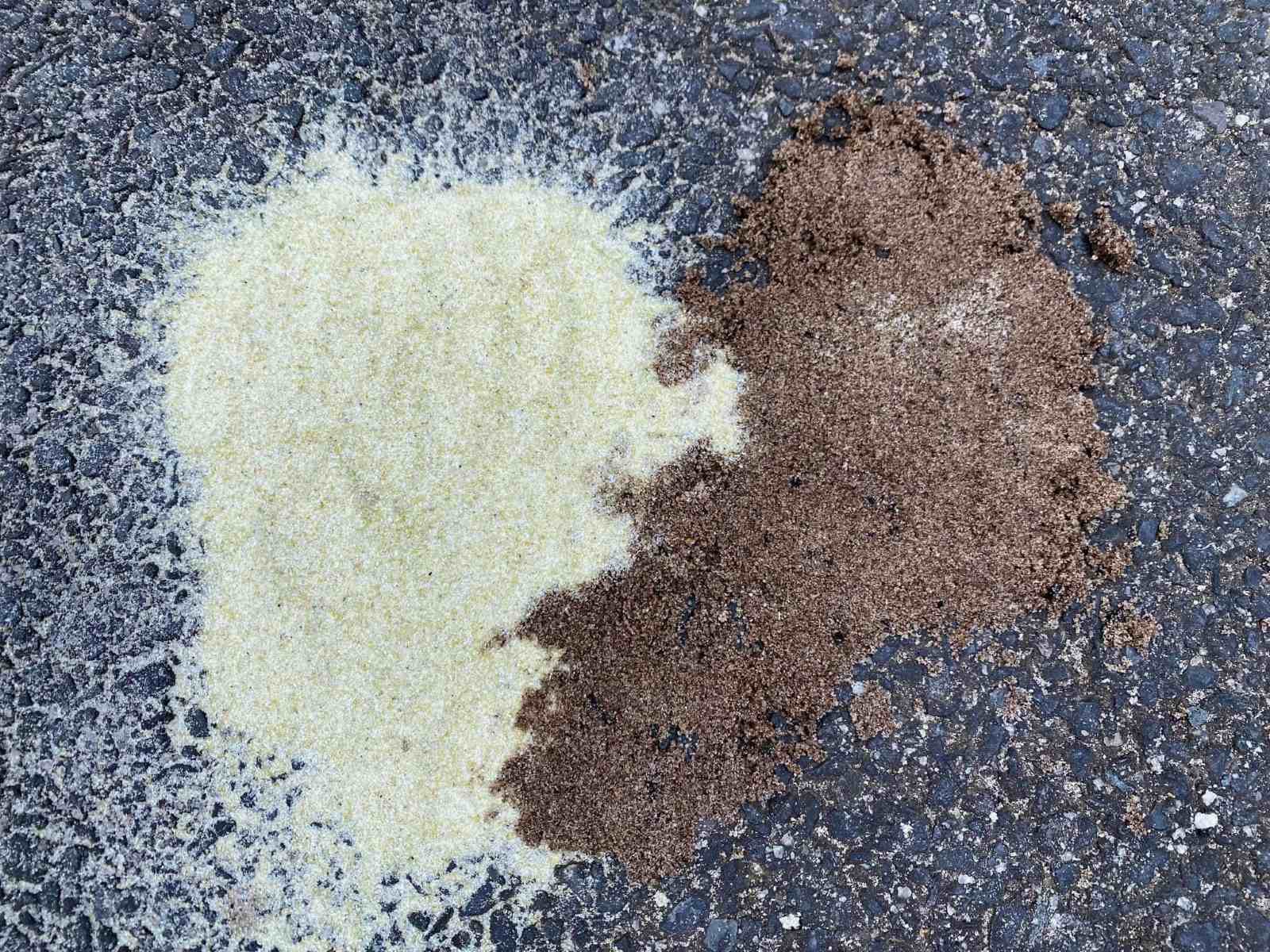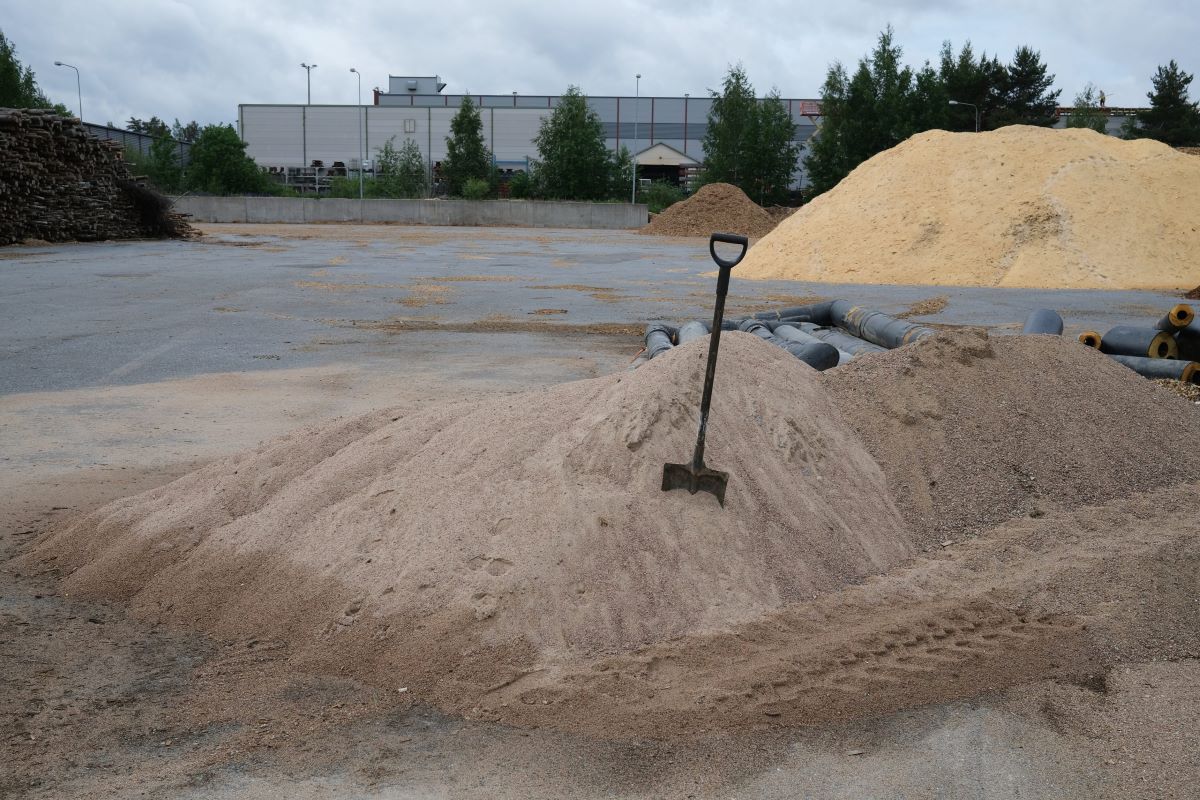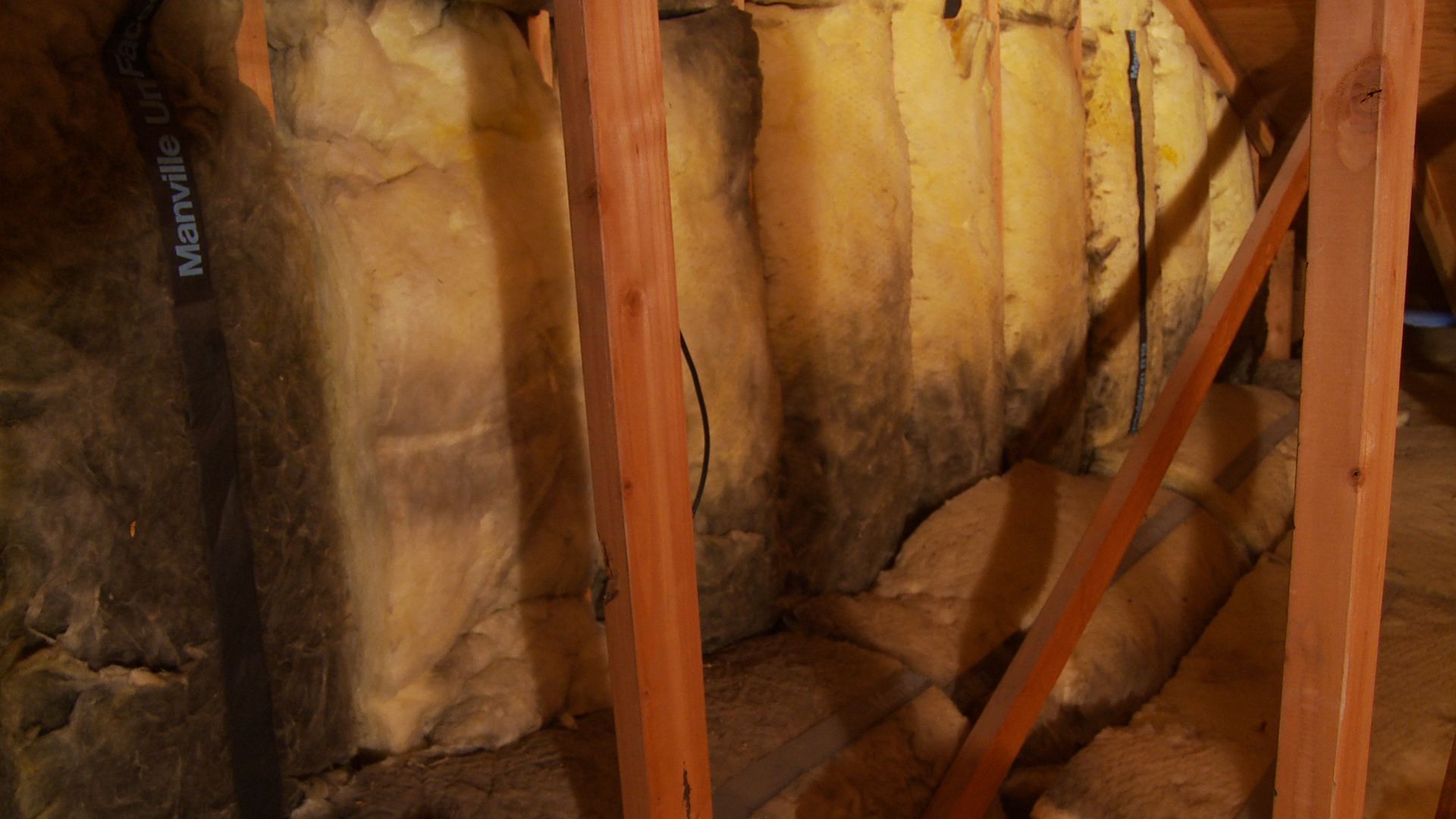Home>Furniture & Design>Interior Design Trends>How Does Sand Turn Into Glass


Interior Design Trends
How Does Sand Turn Into Glass
Modified: May 6, 2024
Discover the fascinating process of how sand transforms into glass and stay updated on the latest interior design trends. Explore the art of glassmaking and find inspiration for your next design project.
(Many of the links in this article redirect to a specific reviewed product. Your purchase of these products through affiliate links helps to generate commission for Storables.com, at no extra cost. Learn more)
Introduction
Glass is a material that we encounter in our daily lives, from the windows in our homes to the screens of our smartphones. It's a versatile substance that has been used for centuries, with its origins dating back to ancient civilizations. But have you ever wondered how sand, a common natural resource, transforms into the transparent, durable material we know as glass?
The process of turning sand into glass is a fascinating journey that involves the application of heat and the manipulation of raw materials. Understanding this transformation sheds light on the remarkable properties of glass and its wide-ranging applications in various industries.
In this article, we will delve into the intricate process of making glass from sand, exploring the pivotal role of heat in this transformation. Additionally, we will examine the different types of glass produced from sand and highlight the diverse applications of glass in industries such as construction, automotive, and technology.
Join us as we embark on a captivating exploration of how the humble grains of sand undergo a remarkable metamorphosis to become the indispensable material we rely on in our modern world.
Key Takeaways:
- From sand to glass: Heat transforms sand, soda ash, and limestone into molten glass, which can be shaped into various forms, from delicate ornaments to sturdy window panes.
- Diverse glass types: Sand yields soda-lime, borosilicate, tempered, fused silica, lead crystal, and float glass, each with unique properties for specific applications in construction, automotive, technology, and healthcare.
Read more: At What Temperature Does Sand Turn To Glass
The Process of Making Glass from Sand
The process of transforming sand into glass is a captivating journey that involves several intricate steps. It all begins with the primary ingredient: sand. Silica sand, composed of silicon dioxide, is the fundamental component used in glass production due to its high purity and ability to withstand high temperatures. To initiate the glassmaking process, the sand is combined with other key ingredients such as soda ash and limestone. These additional components serve various purposes, including reducing the melting point of the sand and enhancing the stability and durability of the resulting glass.
Once the raw materials are carefully measured and mixed, they undergo a meticulous process known as melting. This crucial stage takes place in a furnace, where the combined materials are subjected to intense heat, reaching temperatures exceeding 1700°C (3092°F). The extreme heat causes the sand and other components to fuse together, forming a molten liquid known as molten glass. This molten glass possesses remarkable properties, including high viscosity and the ability to be shaped and molded into various forms.
Following the melting process, the molten glass is carefully shaped and manipulated into the desired forms. This can be achieved through techniques such as blowing, pressing, or molding, depending on the intended use of the glass. The molten glass is skillfully shaped by experienced artisans or advanced machinery to create a wide array of glass products, ranging from delicate ornaments to sturdy window panes and intricate glassware.
Once the glass has been shaped and formed, it undergoes a gradual cooling process to ensure its structural integrity and stability. This controlled cooling process is essential in preventing internal stresses within the glass, which could compromise its strength and transparency. As the glass gradually cools, its molecular structure stabilizes, resulting in the transparent, solid material that we commonly recognize as glass.
The process of making glass from sand is a testament to the ingenuity and precision of glassmakers throughout history. From the meticulous combination of raw materials to the transformative effects of heat and shaping, each step in the process contributes to the creation of this versatile and indispensable material.
The journey from sand to glass exemplifies the remarkable fusion of science, artistry, and innovation, resulting in a substance that has shaped human civilization and continues to play a pivotal role in our modern world.
The Role of Heat in Turning Sand into Glass
The pivotal role of heat in the transformation of sand into glass cannot be overstated. Heat serves as the catalyst that initiates and facilitates the remarkable metamorphosis of raw materials into the transparent, durable substance we know as glass.
When the meticulously measured combination of sand, soda ash, and limestone is introduced to the intense heat of the furnace, a profound chemical reaction takes place. The high temperatures, often exceeding 1700°C (3092°F), cause the molecular structure of the raw materials to undergo a dramatic shift. The silicon dioxide in the sand, the primary component of glass, transitions from a solid state to a molten liquid, known as molten glass.
This transformation is made possible by the unique properties of silica, which has a high melting point and the ability to maintain its transparency even in its molten state. The addition of soda ash and limestone further facilitates this process by lowering the melting point of the sand and enhancing the stability and workability of the molten glass.
As the raw materials reach their melting point, they fuse together, forming a viscous, glowing liquid that possesses remarkable potential. This molten glass, with its high viscosity and malleability, becomes the canvas for skilled artisans and advanced machinery to shape and mold into a myriad of forms, ranging from delicate ornaments to robust architectural panels.
The controlled application of heat is also instrumental in the gradual cooling process that follows the shaping of the glass. This cooling phase is essential in stabilizing the molecular structure of the glass, ensuring its strength and transparency. The gradual reduction of temperature allows the glass to solidify without internal stresses, resulting in a material that is both resilient and visually pristine.
In essence, the role of heat in turning sand into glass is transformative and multifaceted. It initiates the fusion of raw materials, facilitates the shaping and manipulation of molten glass, and ultimately contributes to the creation of a material that has become indispensable in countless applications.
The journey from sand to glass is a testament to the profound impact of heat and the ingenuity of those who harness its power to shape the world around us.
When sand is heated to a very high temperature, it melts and turns into a liquid. When the liquid cools down, it solidifies and becomes glass. This process is called “melting and cooling.”
Different Types of Glass Produced from Sand
The production of glass from sand yields a diverse array of glass types, each tailored to specific applications and characterized by unique properties. Understanding the different types of glass offers insight into the versatility and adaptability of this remarkable material.
-
Soda-Lime Glass: Also known as "soft glass," soda-lime glass is the most common type of glass produced from sand. It is widely used in the manufacturing of windows, bottles, and glass containers. This type of glass is characterized by its transparency, ease of shaping, and relatively low melting point, making it ideal for mass production.
-
Borosilicate Glass: Renowned for its exceptional thermal resistance and durability, borosilicate glass is a popular choice for laboratory glassware, cookware, and high-quality lighting products. This type of glass, containing boron trioxide as a key component, exhibits superior resistance to thermal shock and chemical corrosion, making it suitable for demanding applications.
-
Tempered Glass: Through a specialized heat treatment process, tempered glass is produced from sand, resulting in a material with enhanced strength and safety features. Tempered glass is widely utilized in architectural applications, such as glass doors, shower enclosures, and automotive windows, due to its ability to withstand impact and break into small, granular pieces rather than sharp shards.
-
Fused Silica Glass: Fused silica glass, also known as quartz glass, is prized for its exceptional purity and high resistance to extreme temperatures. This type of glass is utilized in precision optics, semiconductor manufacturing, and high-temperature industrial applications. Its low thermal expansion and excellent optical transmission properties make it indispensable in demanding technological and scientific fields.
-
Lead Crystal Glass: Recognized for its brilliance and clarity, lead crystal glass is a luxurious type of glass produced from sand, lead oxide, and other additives. This glass type is favored for fine tableware, decorative items, and exquisite chandeliers due to its exceptional refractive index and elegant aesthetic appeal.
-
Float Glass: A modern innovation in glass production, float glass is manufactured by floating molten glass on a bed of molten tin, resulting in a perfectly flat and uniform surface. This type of glass is extensively used in architectural glazing, automotive windshields, and electronic displays, offering exceptional optical clarity and uniform thickness.
The diverse range of glass types produced from sand underscores the adaptability and utility of this remarkable material. From everyday essentials to cutting-edge technological applications, glass continues to play a pivotal role in shaping our modern world, thanks to its remarkable versatility and diverse range of properties.
Applications of Glass in Various Industries
Glass, derived from the transformation of sand, has become an indispensable material in a wide range of industries, each benefiting from its unique properties and versatility. The applications of glass extend far beyond traditional windows and tableware, encompassing diverse sectors such as construction, automotive, technology, and healthcare.
In the construction industry, glass serves as a fundamental building material, contributing to the aesthetic appeal, energy efficiency, and functionality of modern structures. Architectural glass, including insulated glass units and laminated glass, enhances the thermal performance of buildings while allowing natural light to permeate interior spaces. Additionally, glass facades and curtain walls not only provide structural support but also create visually striking exteriors, redefining urban skylines around the world.
The automotive industry relies heavily on glass for safety, visibility, and design. Automotive glass, including windshields, side windows, and rear windows, is engineered to withstand impact and contribute to the structural integrity of vehicles. Advanced technologies, such as heads-up displays and augmented reality systems, further demonstrate the innovative applications of glass in enhancing the driving experience and safety features in modern automobiles.
In the realm of technology, glass plays a pivotal role in the production of electronic devices, optical components, and display panels. From the sleek screens of smartphones and tablets to the precision optics of cameras and telescopes, glass enables the seamless transmission of light and the creation of high-definition visual displays. Moreover, specialty glasses, such as chemically strengthened glass and ultra-thin glass, are integral to the development of cutting-edge electronics and innovative wearable devices.
The healthcare and pharmaceutical industries benefit from the unique properties of glass in the form of laboratory glassware, medical devices, and pharmaceutical packaging. Borosilicate glass, renowned for its thermal resistance and chemical inertness, is utilized in the production of test tubes, beakers, and vials, ensuring the integrity and safety of scientific experiments and medical treatments. Additionally, glass containers and vials provide an ideal medium for preserving and delivering pharmaceutical products, safeguarding their potency and purity.
The applications of glass in various industries exemplify its adaptability, durability, and aesthetic appeal, making it an essential component in modern construction, transportation, technology, and healthcare. As technology and innovation continue to advance, the role of glass in shaping the future of these industries remains pivotal, driving progress and enhancing the quality of life for people around the globe.
Read more: How Does Sand Become Glass
Conclusion
The journey from sand to glass is a testament to the remarkable transformation that occurs through the application of heat and the ingenuity of human craftsmanship. The process of making glass from sand involves a delicate balance of raw materials, precise measurements, and controlled heat, resulting in a material that has shaped human civilization for millennia.
The pivotal role of heat in turning sand into glass highlights the profound impact of temperature and chemical reactions in altering the molecular structure of raw materials. The intense heat of the furnace initiates the fusion of silica sand, soda ash, and limestone, giving rise to the molten glass that serves as the foundation for a myriad of glass products. This transformative process underscores the synergy of science and artistry, as skilled artisans and advanced machinery shape and mold the molten glass into diverse forms, ranging from delicate ornaments to architectural marvels.
The diverse types of glass produced from sand further exemplify the adaptability and utility of this remarkable material. From the everyday functionality of soda-lime glass to the precision applications of fused silica glass, each type of glass serves specific purposes across industries, showcasing the versatility and ingenuity of glass production.
The applications of glass in various industries, including construction, automotive, technology, and healthcare, underscore its indispensable role in shaping the modern world. From enhancing the energy efficiency of buildings to contributing to the safety features of vehicles and the innovation of electronic devices, glass continues to drive progress and elevate the quality of life for people worldwide.
In conclusion, the journey from sand to glass is a testament to the enduring legacy of this remarkable material. Its transformative properties, diverse applications, and pivotal role in shaping industries underscore the timeless significance of glass in human civilization. As we continue to innovate and push the boundaries of technology and design, the enduring allure and functionality of glass ensure its enduring presence in our lives, serving as a symbol of resilience, innovation, and human ingenuity.
Curious about how everyday objects function in high heat? Our next article sheds light on slow cookers and reveals how hot they really get when set to high. This insight not only broadens your cooking knowledge but also helps you perfect those recipes that require precise temperature control. Don't miss out on mastering your kitchen appliances!
Frequently Asked Questions about How Does Sand Turn Into Glass
Was this page helpful?
At Storables.com, we guarantee accurate and reliable information. Our content, validated by Expert Board Contributors, is crafted following stringent Editorial Policies. We're committed to providing you with well-researched, expert-backed insights for all your informational needs.















0 thoughts on “How Does Sand Turn Into Glass”